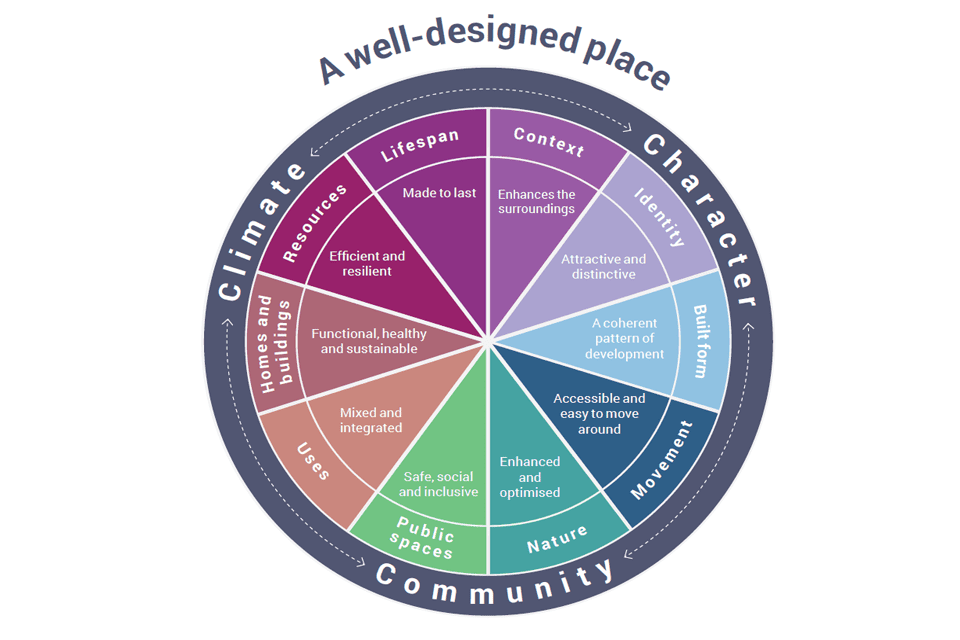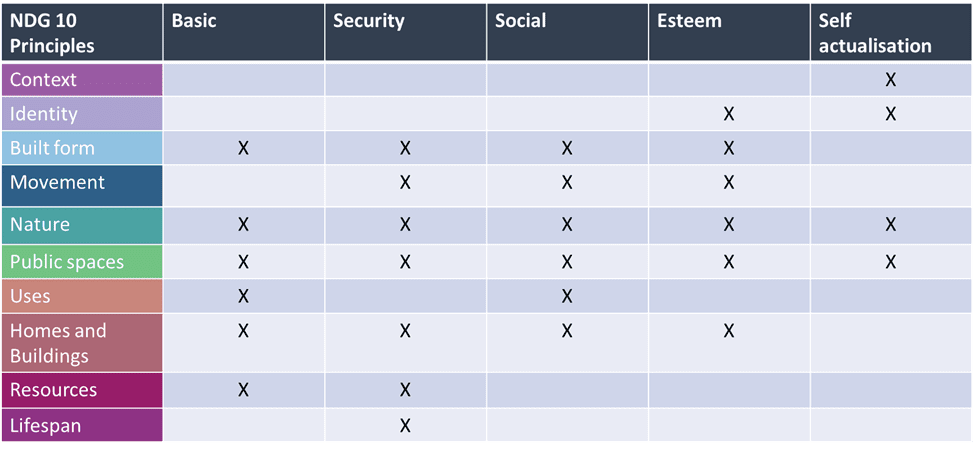With the Placemaking, Levelling Up and Social Value agendas gaining more traction, SHIFT highlights the role that social landlords can play in contributing to these agendas and provides an insight into SHIFT’s Placemaking metrics.
The Department for Levelling Up, Housing and Communities (DLUHC) will be “investing in local areas to drive growth and create jobs, delivering the homes our country needs, supporting our community and faith groups, and overseeing local government, planning and building safety.”
At a recent talk hosted by Design West, DLUCH detailed the National Design Guide as an indication of good performance and what constitutes as a well-designed place. There was no mention of any metric. Following the adage that you can only manage what you measure, we need a meaningful metric to help us define and monitor what good looks like and move towards a ‘levelled-up’ and ‘place-made’ environment.
At SHIFT we have explored a lot of the science behind a suggested metric and how this aligns to the National Design Guide [1].
NDG’s ten principles
For a development to be considered a well-designed place, it must incorporate the NDG’s ten principles. It considers not only the appearance, materials and details of the buildings but the context of the development, the interaction between the hard and soft environment, technical infrastructure provision as well as supporting interactions through social infrastructure.

SHIFT and Maslow
The Maslow Framework, or Maslow’s Hierarchy of Needs, combines 5 principles of human needs which are considered to dictate an individual’s life satisfaction and has scientific support. To have full life satisfaction, one must have their basic needs provided, have security of supply of those basic needs, be able to socialise and build relationships, have opportunities in place to improve their esteem, all to support their achievement of fulfilment through self-actualisation. SHIFT have developed a strategy to align these principles to aspects of an organisation that landlords have responsibility and influence over. Evidently, there will be aspects of a resident’s life that extends beyond the needs provision/or is within a landlord’s remit, but without beginning to understand and monitor resident life satisfaction, there will be no way of knowing what influence HAs can have or what can be changed to help them.
So, how might landlords improve going forward? And how can landlords begin to design their spaces to contribute to resident life satisfaction?
- Start asking your residents what their experience is – how would they define their life satisfaction?
- Certainly, continually assess environmental impact which contributes to security of supply of our basic needs
- How well do your developments satisfy the NDGs 10 Principles?
- How well does this support Maslow’s Needs?
SHIFT have aligned the NDGs and Maslow’s Hierarchy:

If you would like to discuss a Placemaking metric and/or environmental assessment for your organisation, contact Richard at [email protected]
